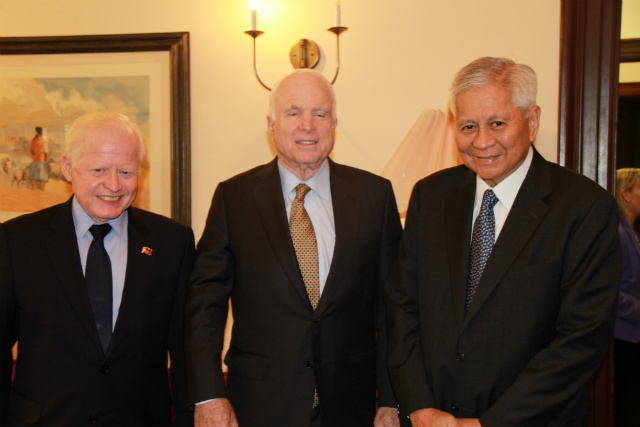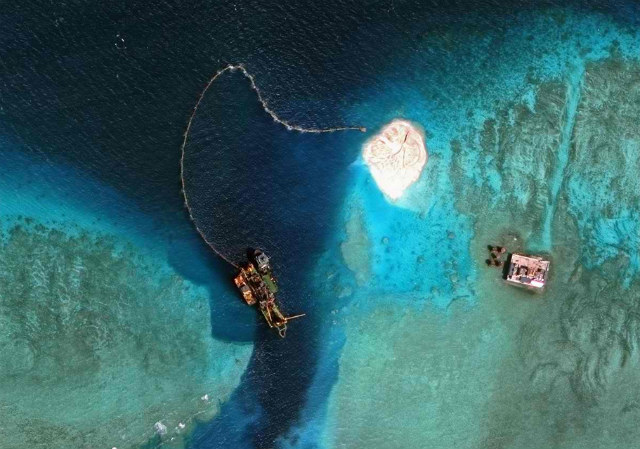Philippine Foreign Secretary Albert del Rosario says the US pivot to Asia 'is not as focused and as strong as it should be'

SEEKING SUPPORT. Philippine Foreign Secretary Albert del Rosario meets with US Deputy Secretary of State Antony Blinken during Del Rosario's two-day trip to Washington DC. Photo courtesy of DFA
Seeking greater support in the face of China's aggression, Philippine Foreign Secretary Albert del Rosario met with key US officials to discuss the Philippines' dispute with China over the West Philippine Sea (South China Sea).
The Philippine Department of Foreign Affairs (DFA) said Del Rosario met with US Deputy Secretary of State Antony Blinken on Tuesday, May 12.
The two leaders discussed the US "rebalance policy" in the Asia Pacific. The rebalance policy, also known as the US "pivot to Asia," means the US plans to bring more of its naval forces to a region threatened by a rising China. (READ: Rebalancing the US pivot to Asia)
Del Rosario and Blinken also discussed "recent developments in the South China Sea, which have direct implications for regional peace, security, and stability," the DFA said in a news release on Wednesday evening, May 13.
These recent developments include China's reclamation activities to build artificial islands in the West Philippine Sea. (READ: PH runway in Spratlys erodes as China reclaims to build own)
Del Rosario also pointed out that the Philippines and the US remain "treaty allies and strategic partners." This means the Philippines' relationship with the US "remains a cornerstone of our foreign policy."
"It is critical that both our countries continue to work together to maintain the dynamism of our alliance," Del Rosario said during his two-day trip to Washington DC.

KEY MEETING. Philippine Foreign Secretary Albert del Rosario (1st from right) and Philippine Ambassador to the US Jose Cuisia Jr (3rd) also meet with US Senator John McCain (2nd) on May 11, 2015. Photo courtesy of DFA
Meeting with US senators, too
On Monday, May 11, Del Rosario, a former Philippine ambassador to the US, also met with US Senators John McCain and Bob Corker.
The two Republican senators, along with Democrats Jack Reed and Bob Menendez, earlier requested a formal strategy to stop China's building of artificial islands in the disputed South China Sea. They addressed this request to US Secretary of State John Kerry.
Del Rosario, who earlier hailed these senators for their request, thanked McCain and Corker for pursuing a "dynamic engagement with Asia."
Accompanied by Philippine Ambassador to the US Jose Cuisia Jr, Del Rosario "also encouraged the forging of bipartisan cooperation in the US legislature with regard to the urgent need to address the worsening situation in the South China Sea."
In another event organized by the Center for Strategic and International Studies, Del Rosario reportedly pointed out, "We are trying to deliver the message that the Asia pivot is not as focused and as strong as it should be."
This comes as the US "is considering sending US military aircraft and ships to assert freedom of navigation around growing Chinese-made artificial islands in the disputed South China Sea," according to a US official quoted by Reuters.
The reported US plan has angered China, which prefers a one-on-one instead of a third-party approach to resolve the sea dispute.




